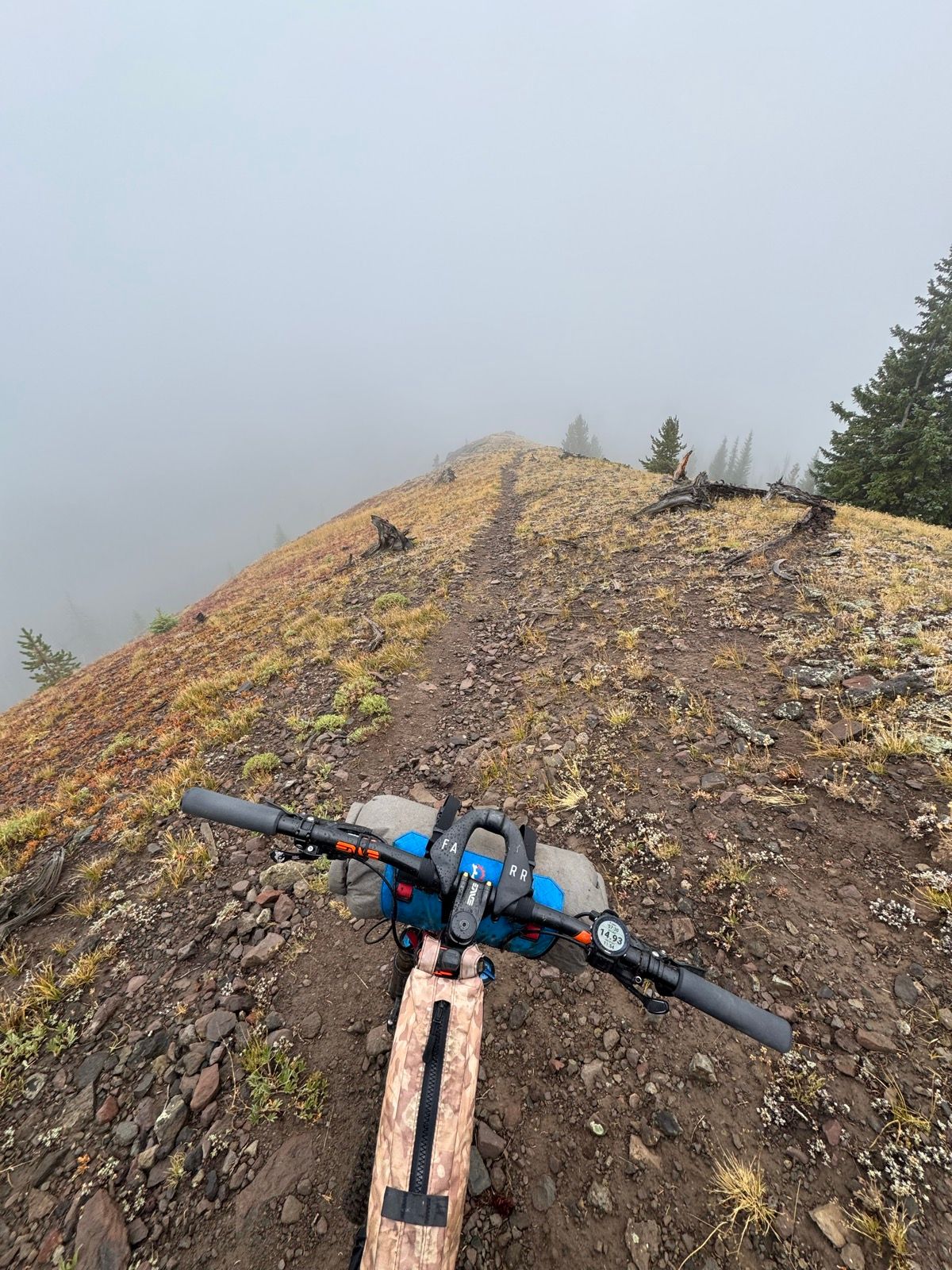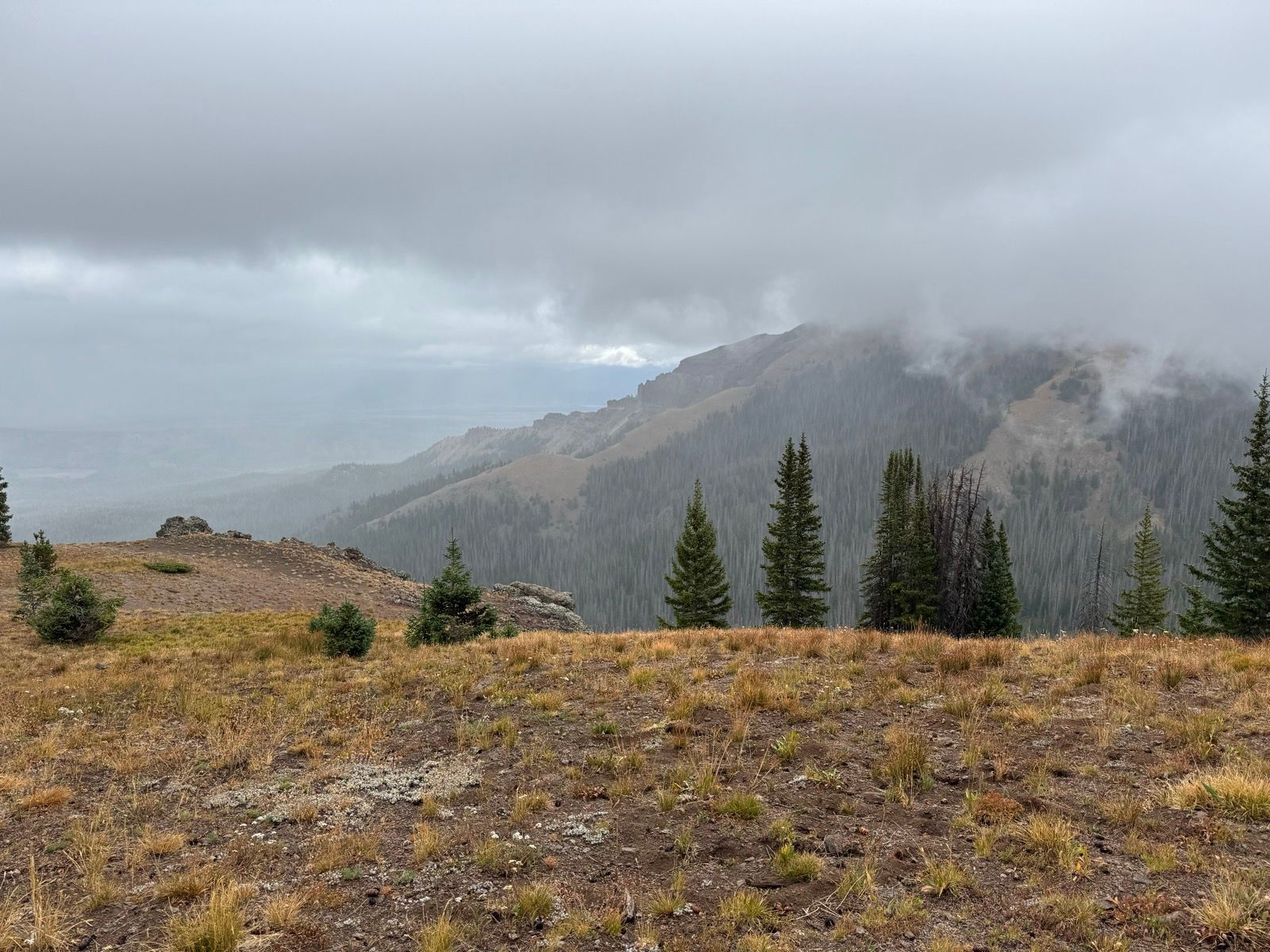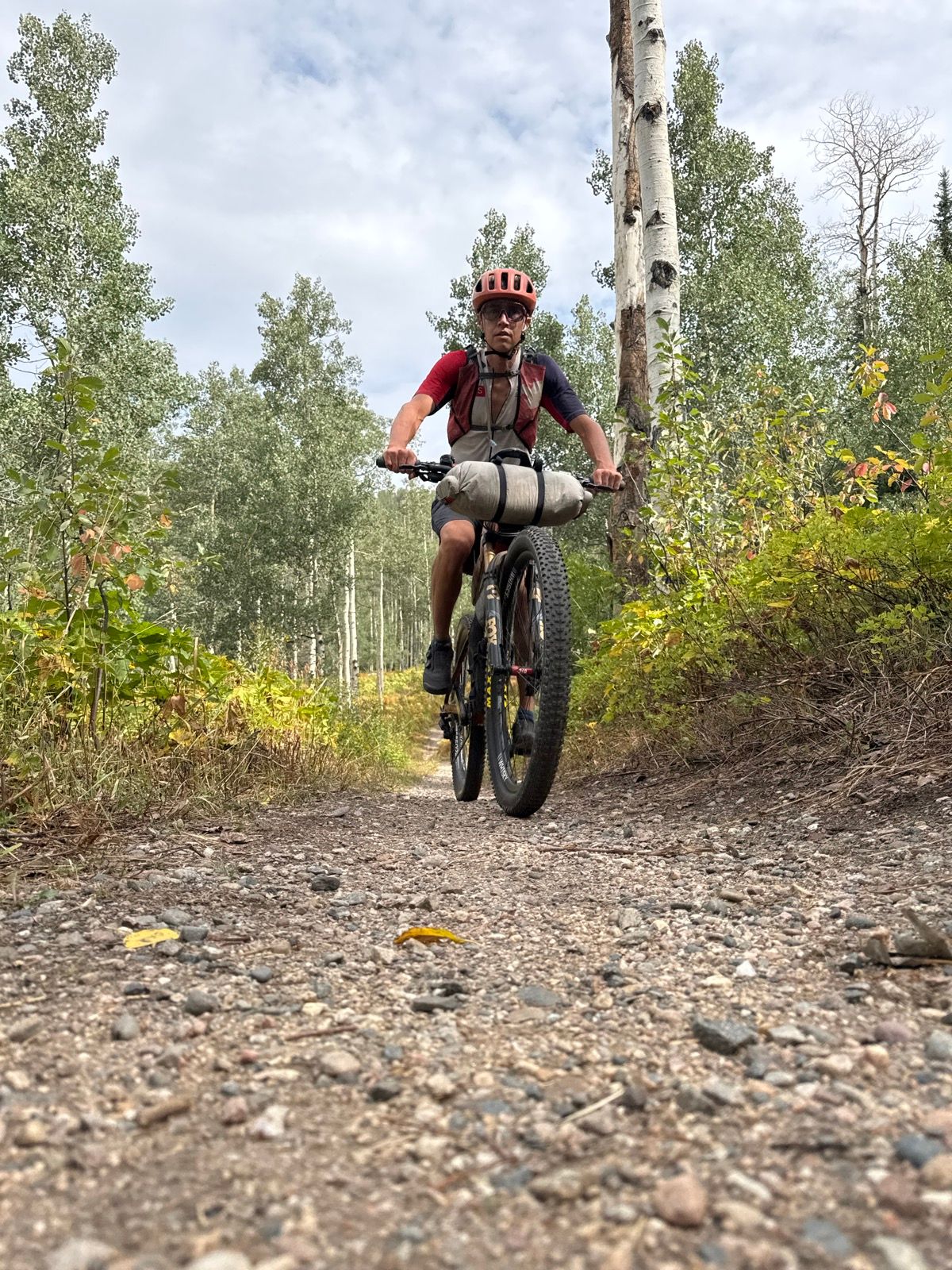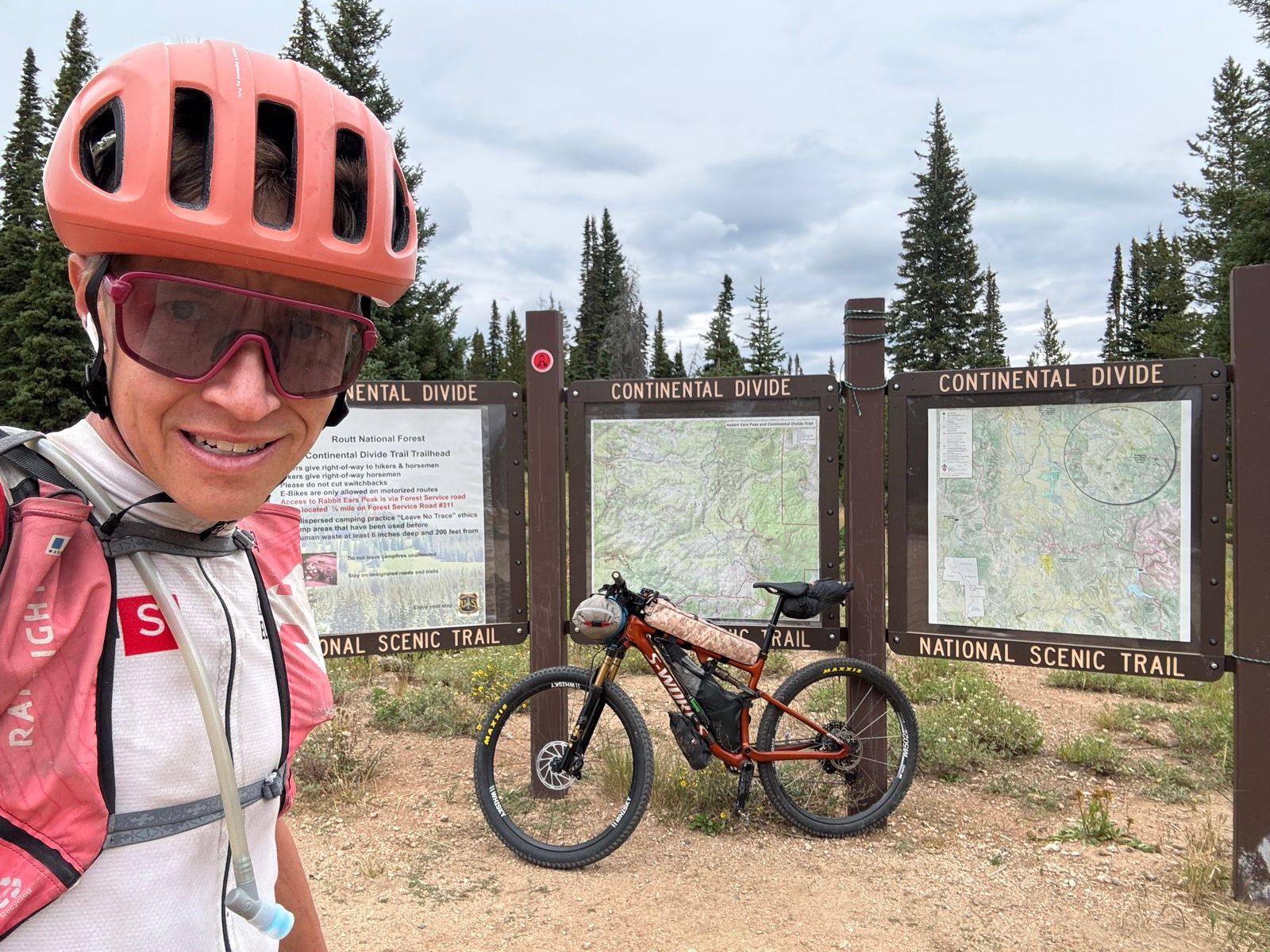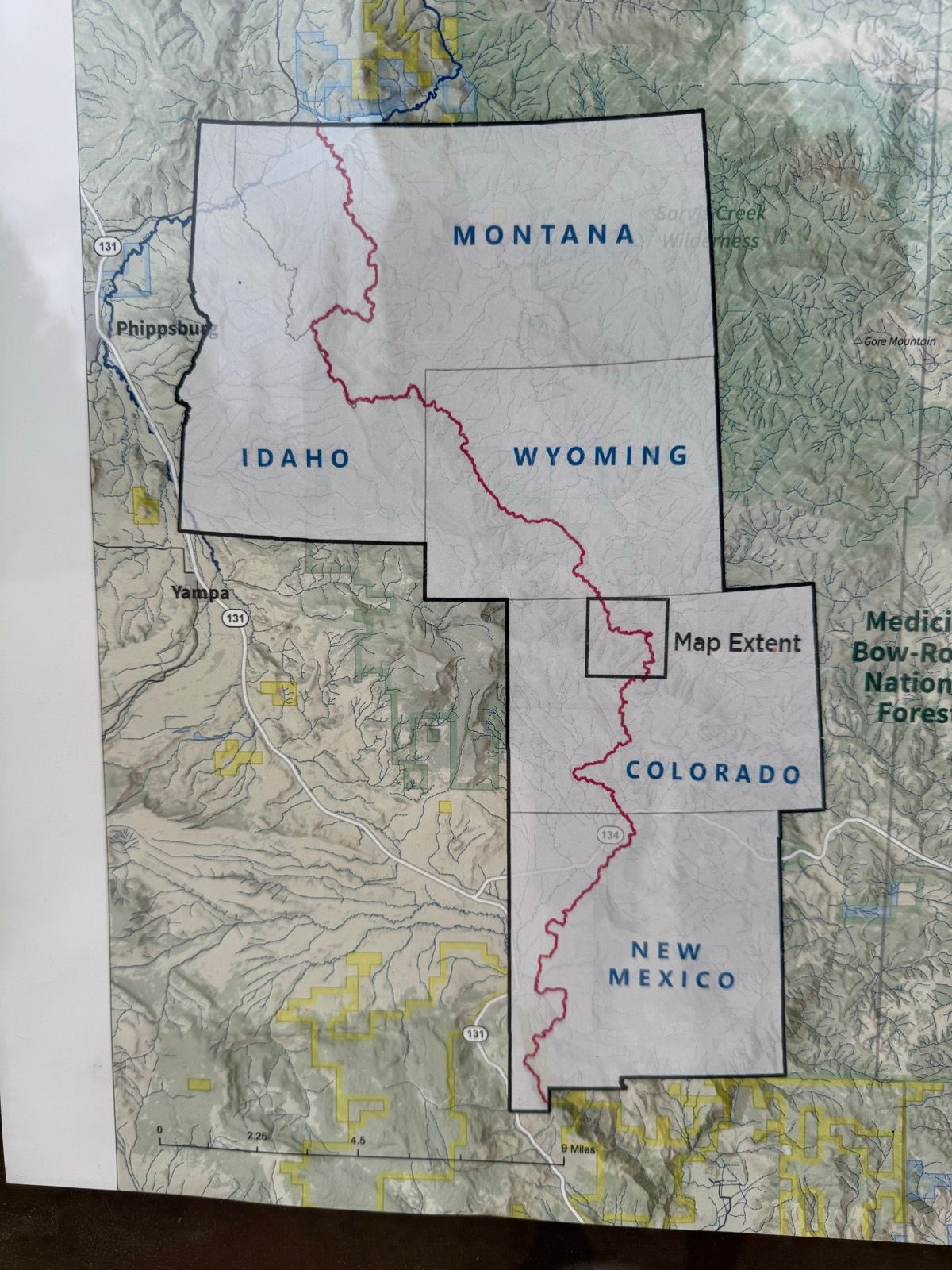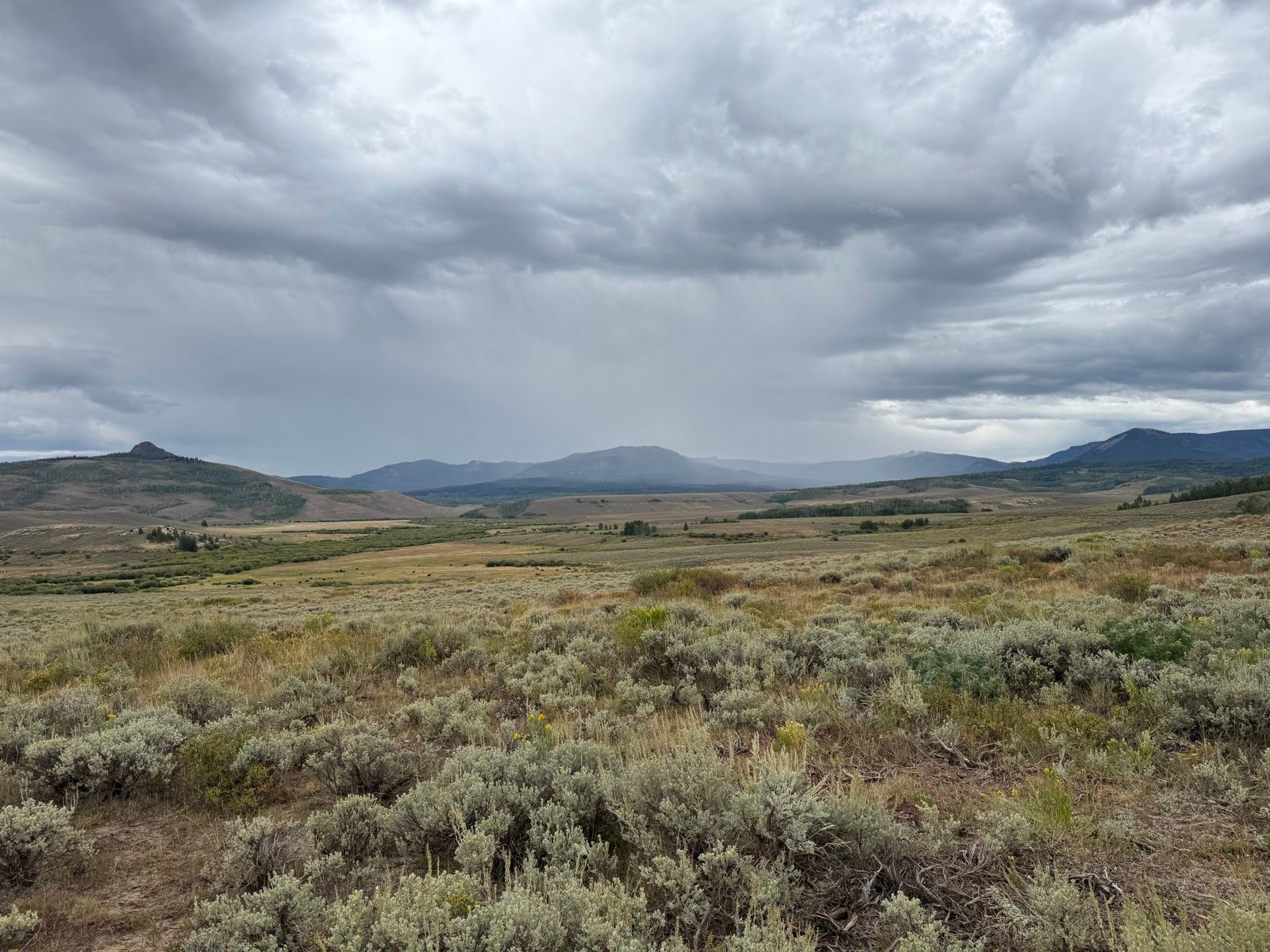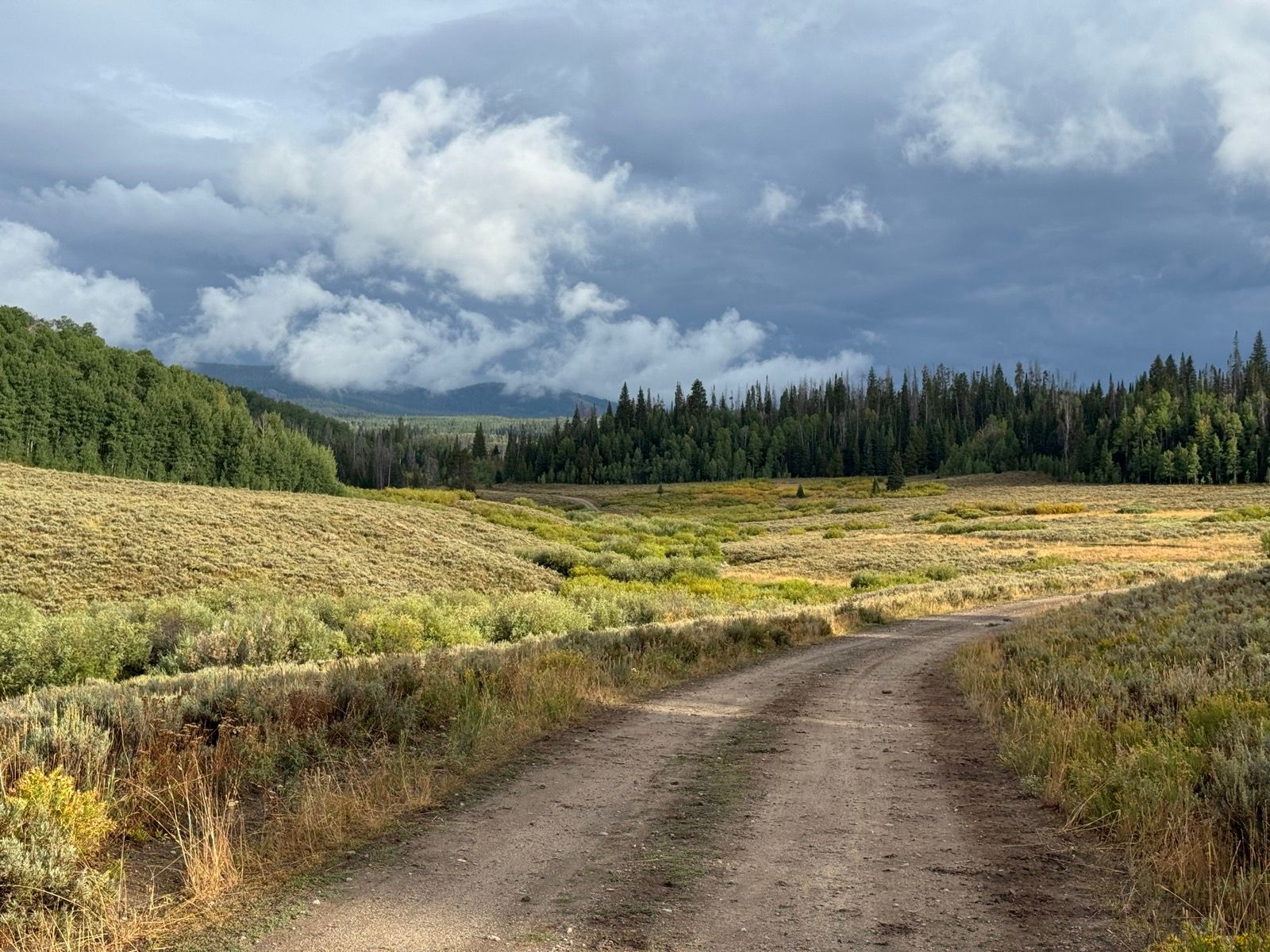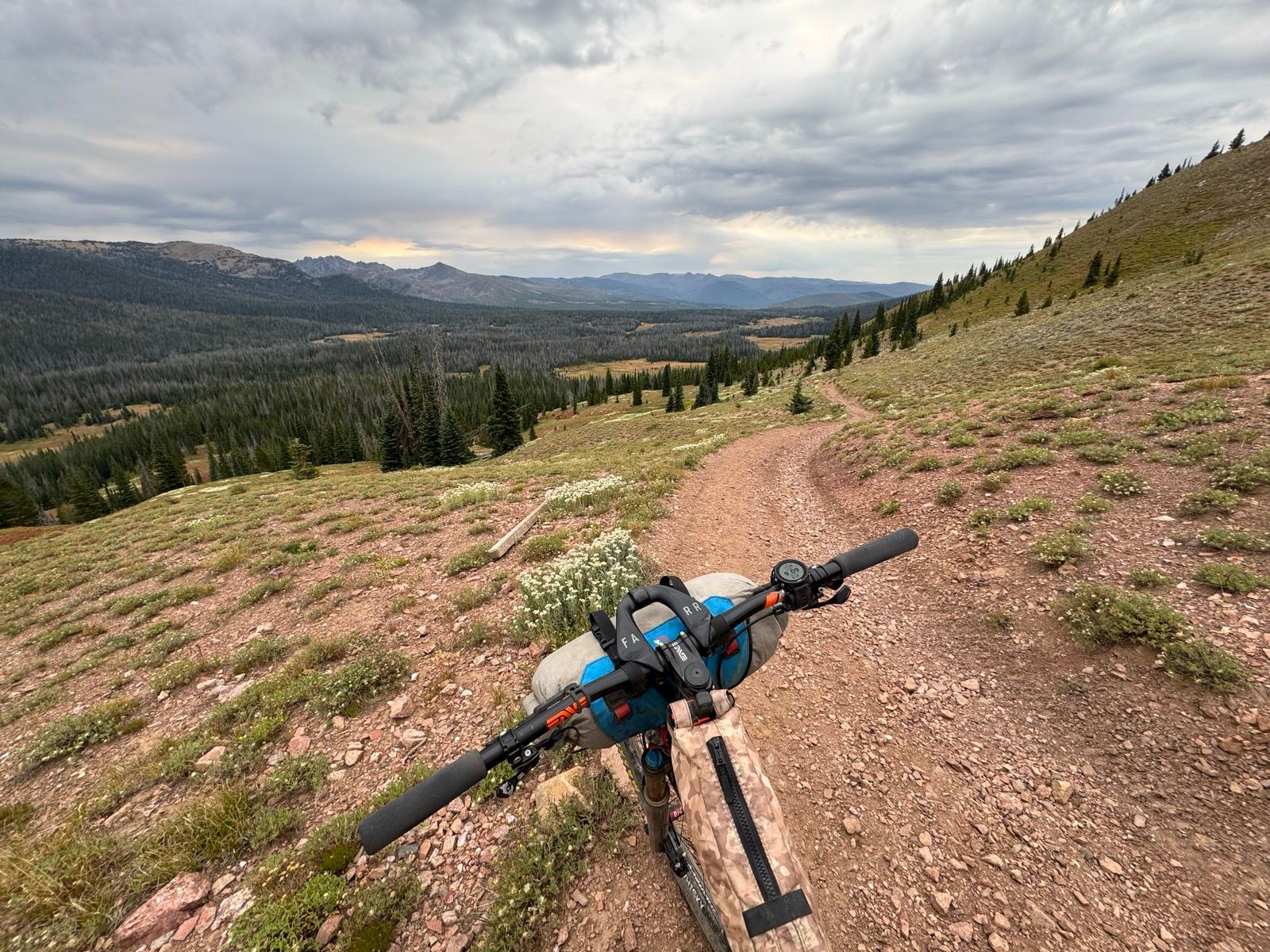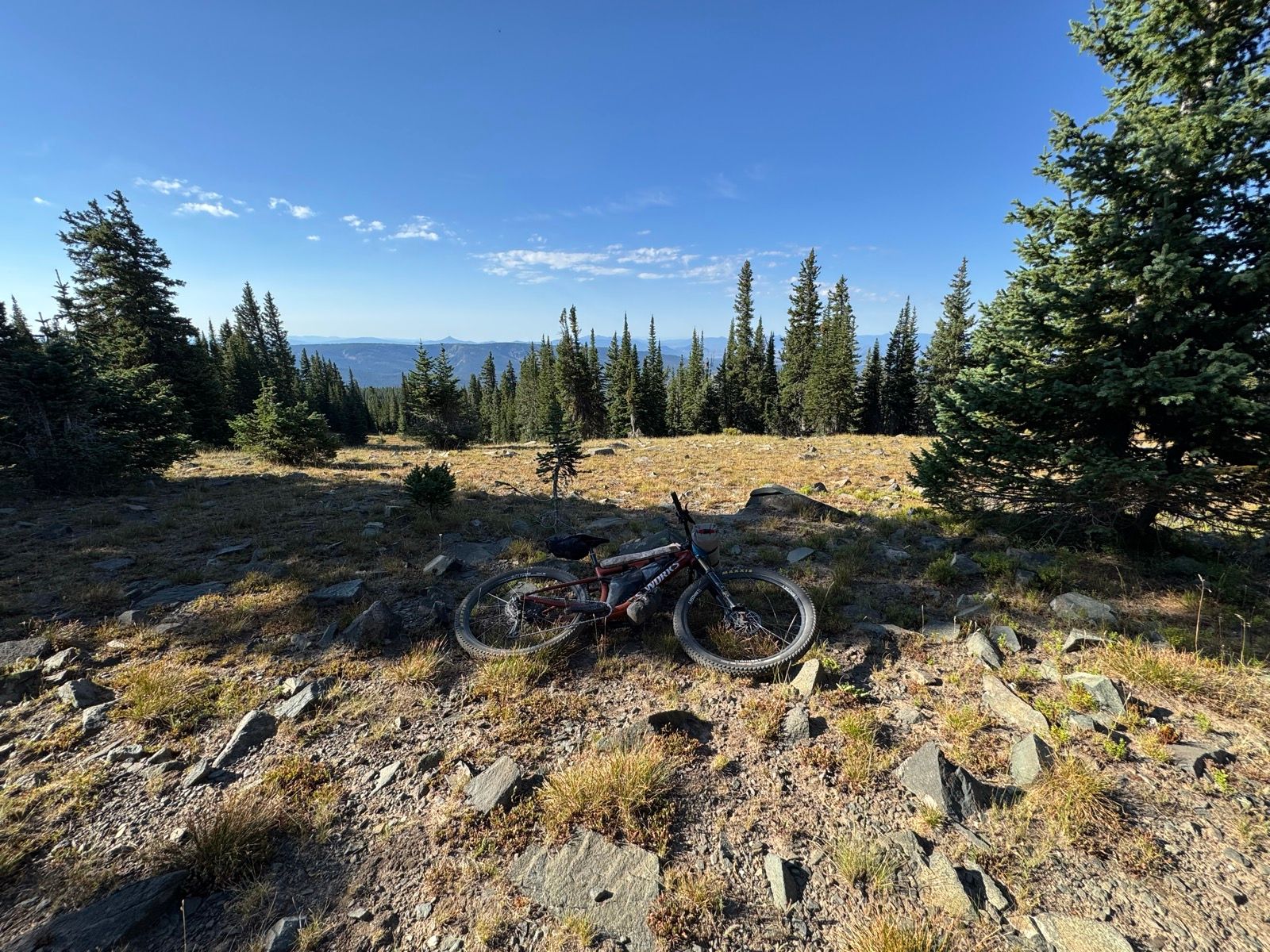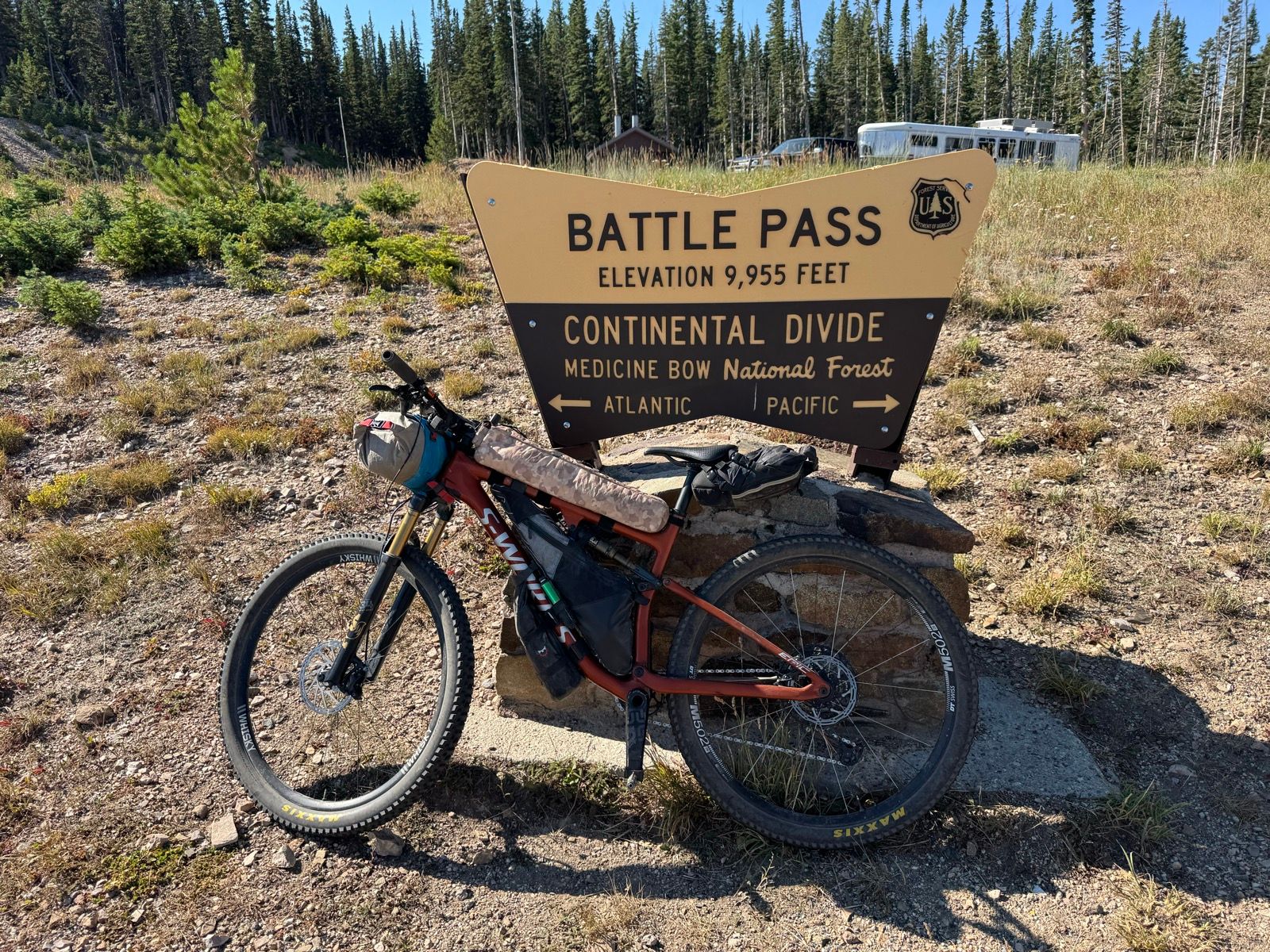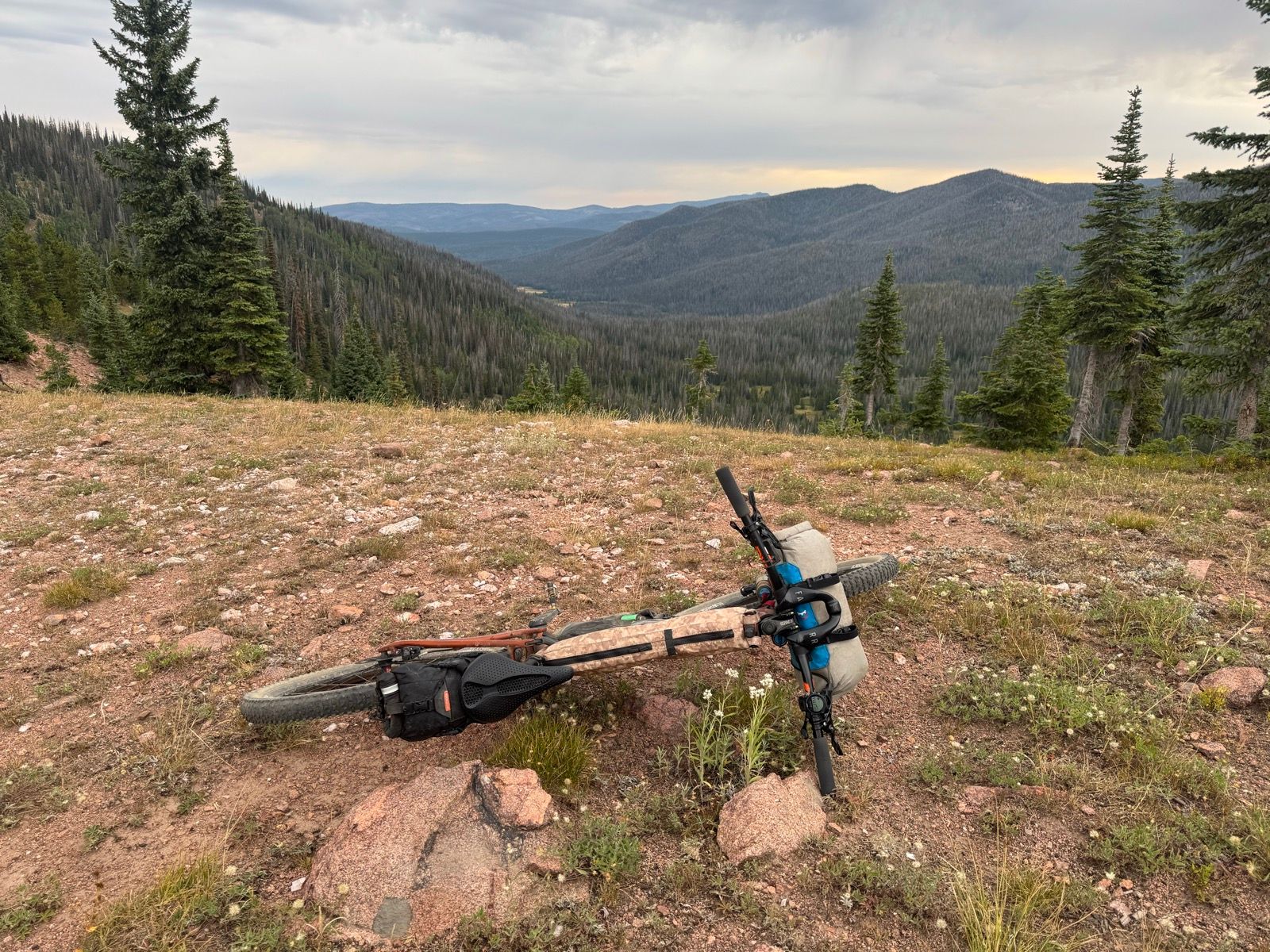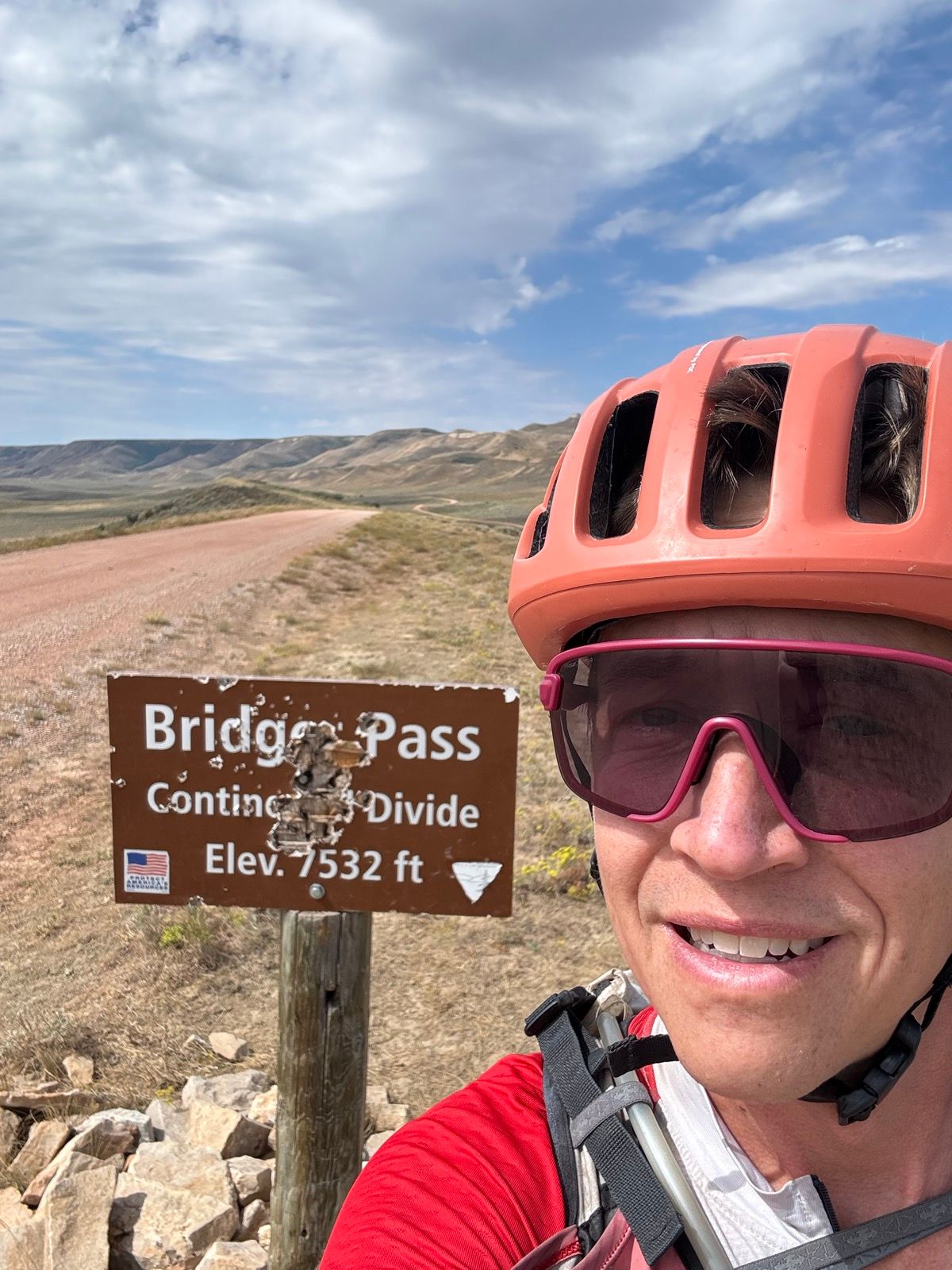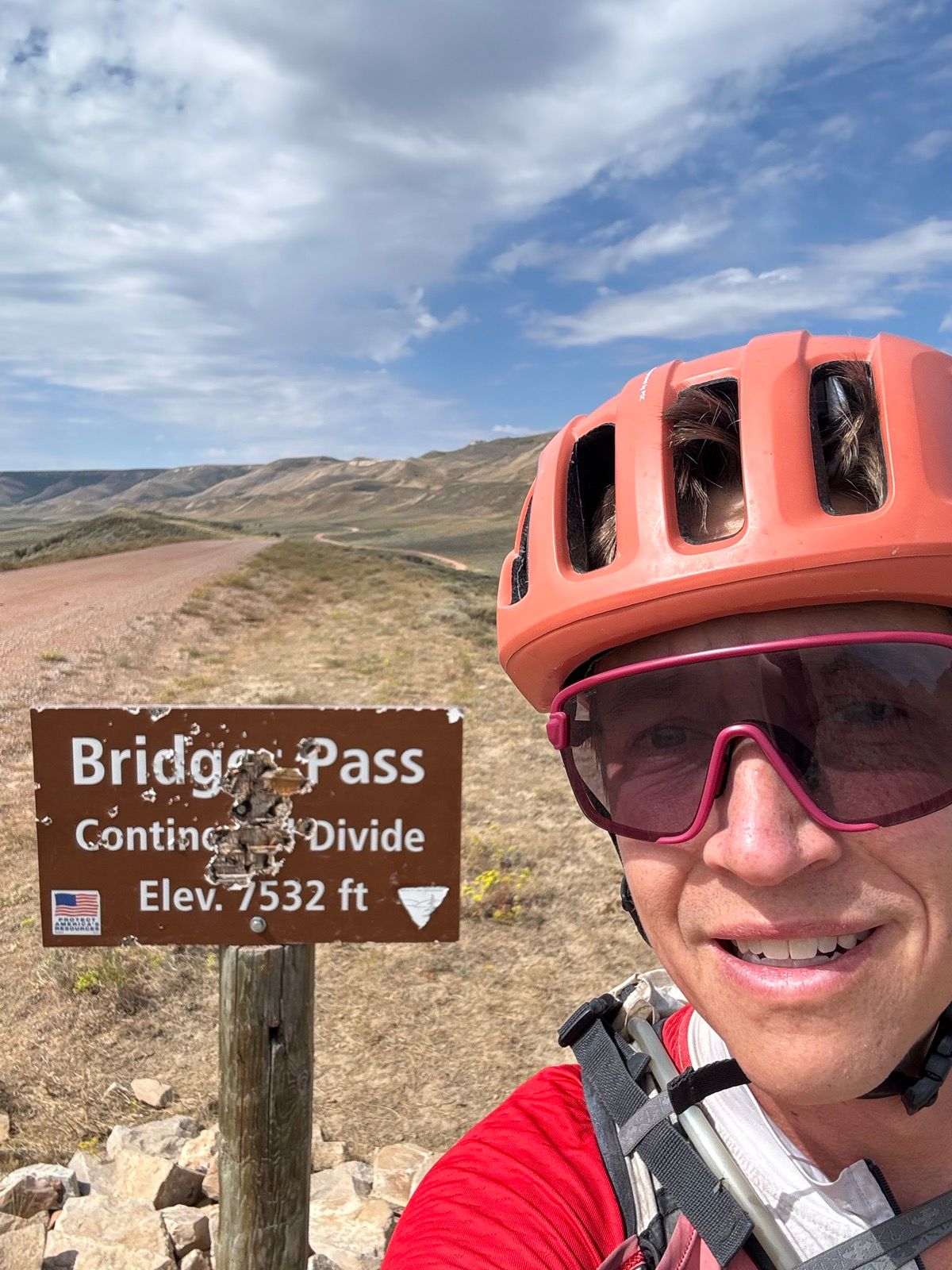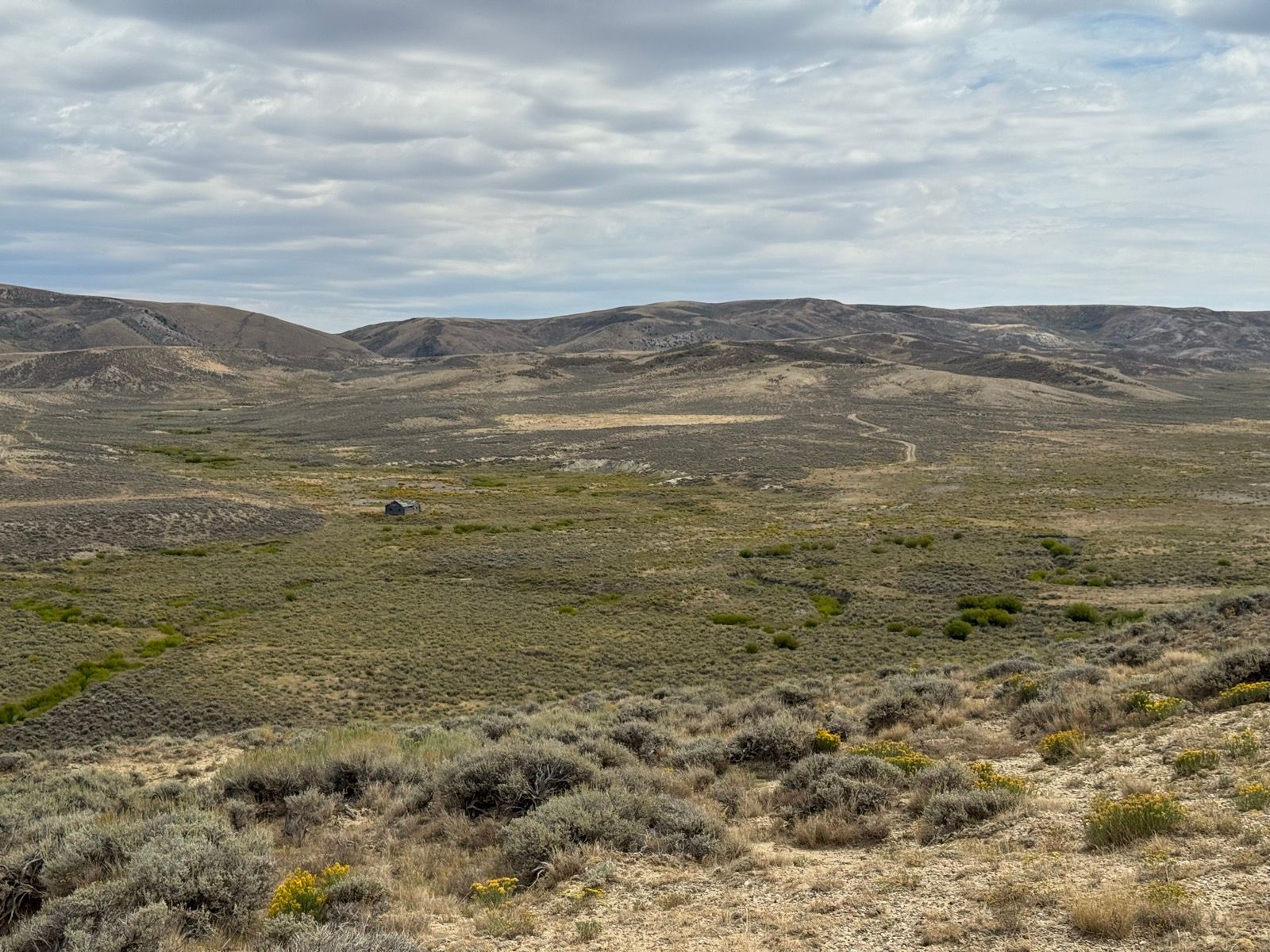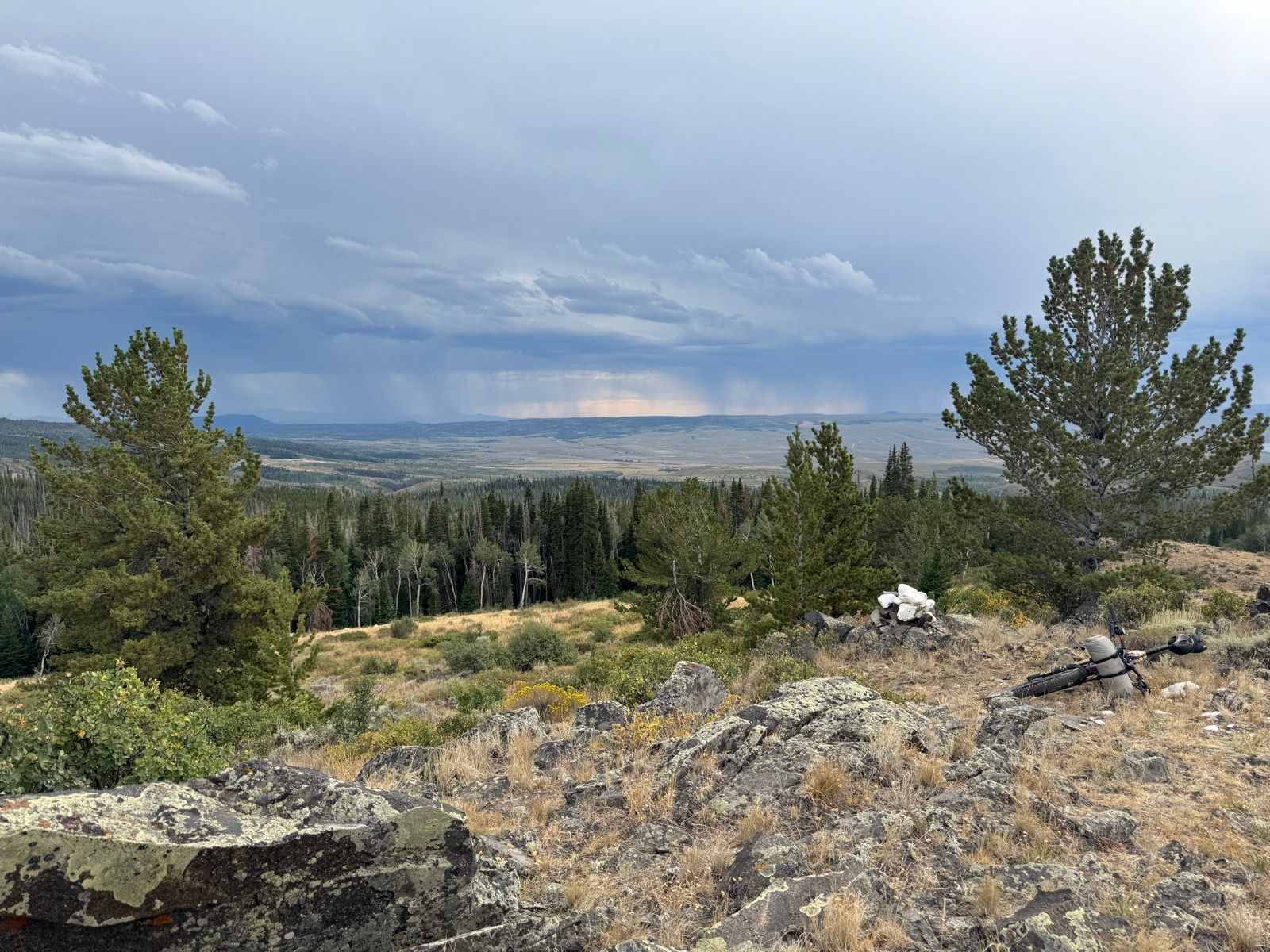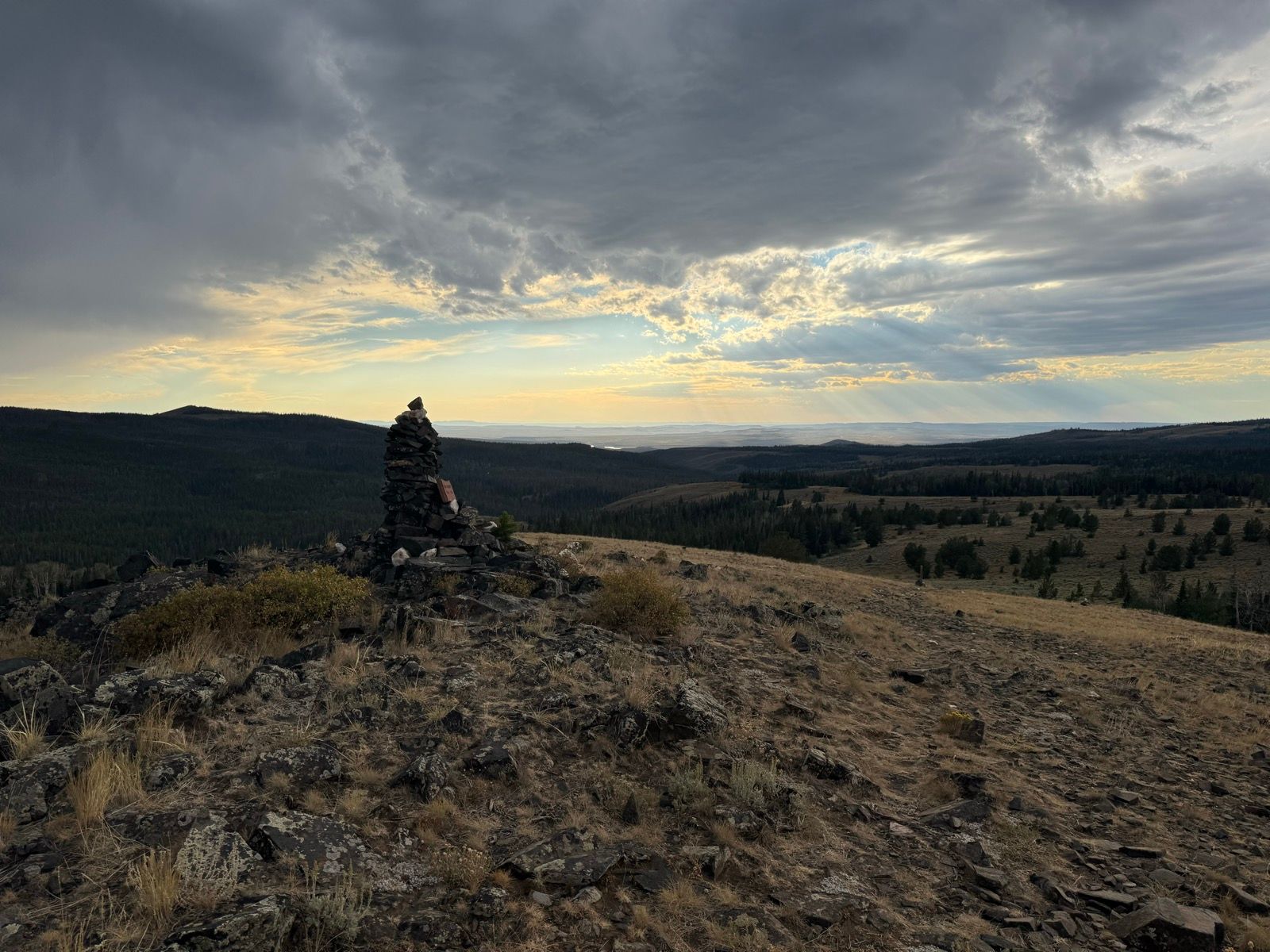38: Rabbit Ears Range Traverse
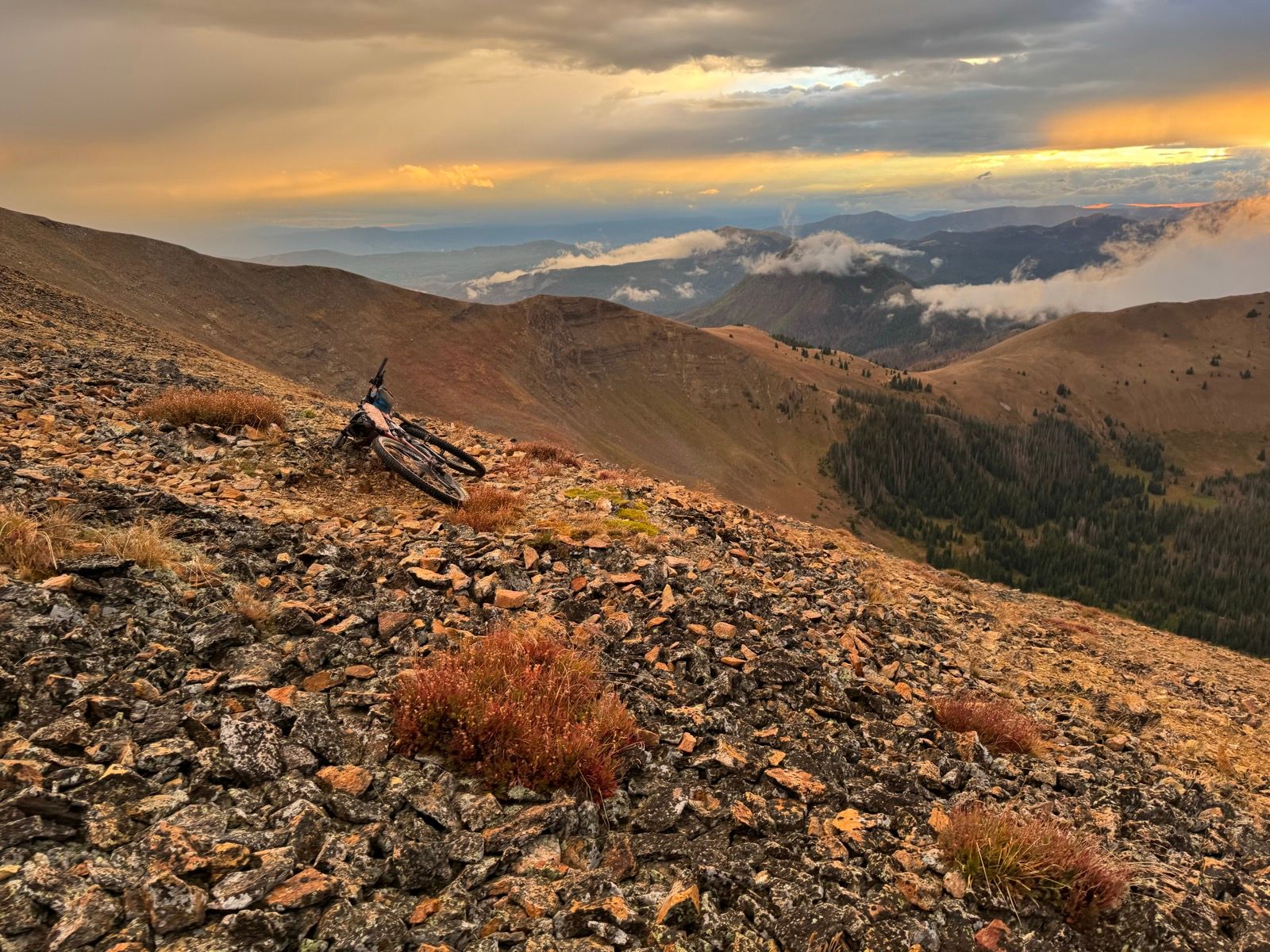
If I thought arrival in populous Colorado portended straightforward (if strenuous!) progress on well-travelled trails, I’ve been swiftly disillusioned.
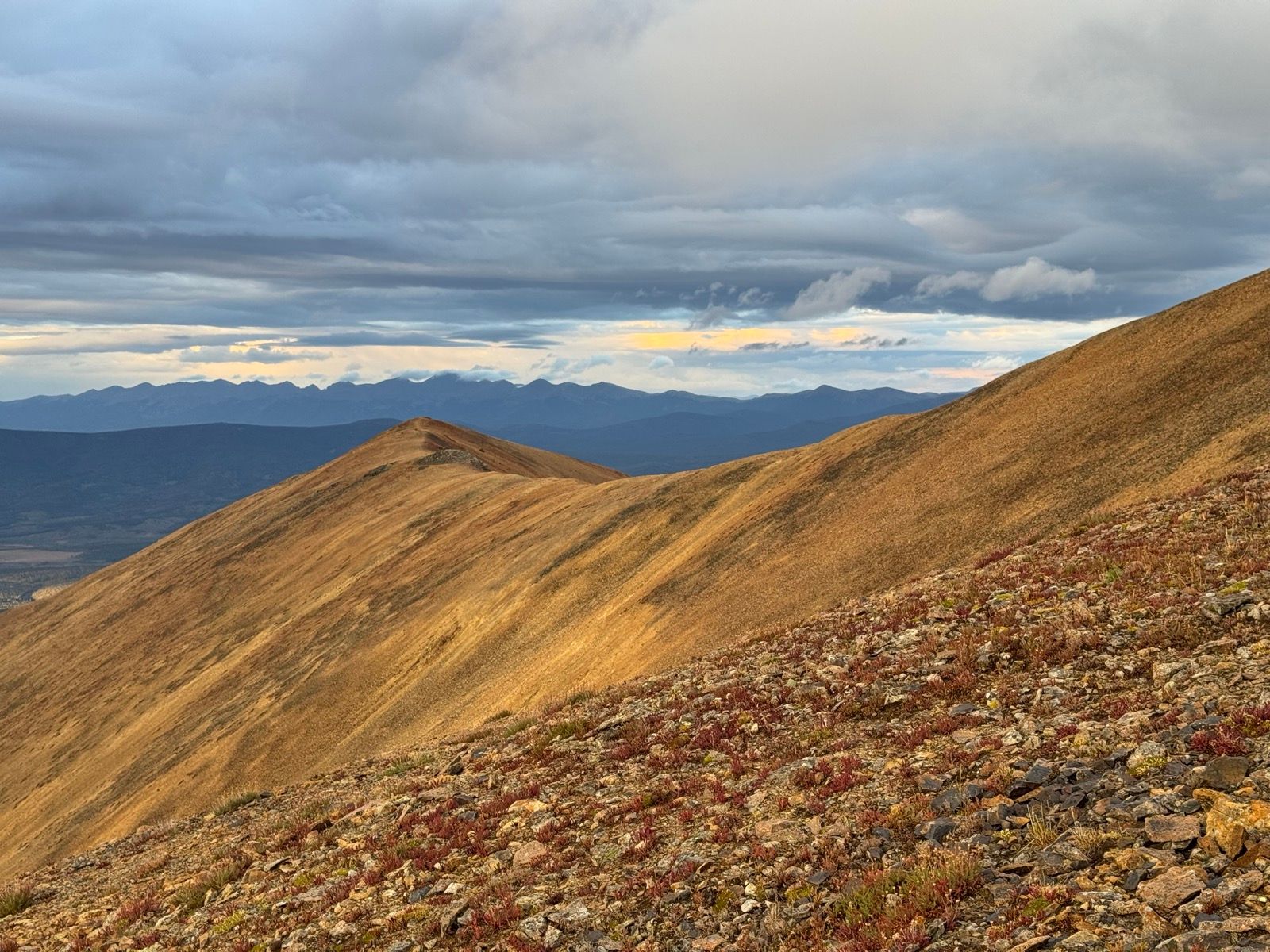
Rather, today’s travel was one of my hardest days yet. My two great bugaboos on this trip (well, mechanical issues aside) showed up today in force: drenching, persistent rain; and, an unfathomable number of downed trees.
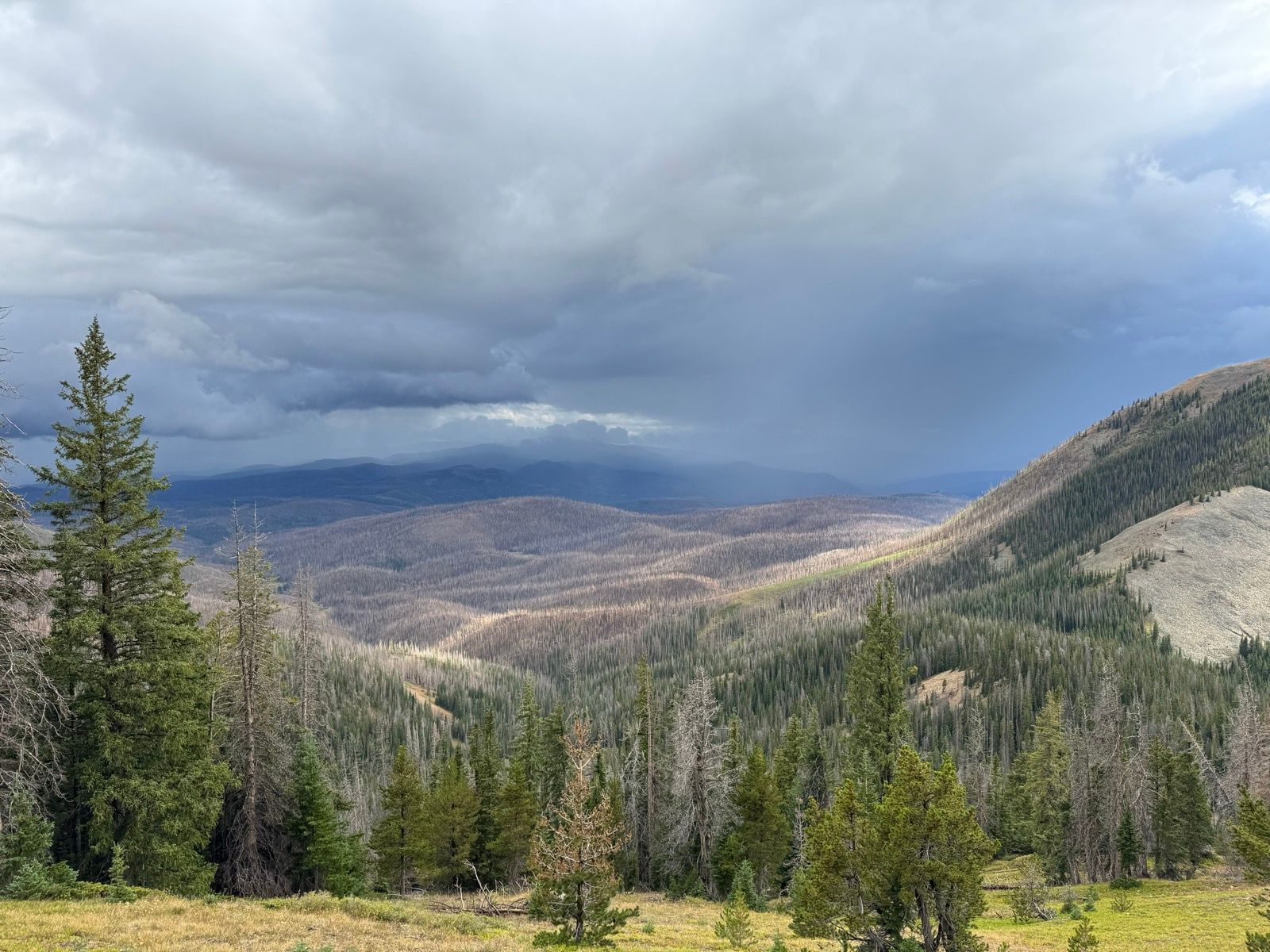
I walked around; stepped over with my bike; lifted my bike over then crawled over myself; or, crawled under probably 150 trees today. I managed an average speed of just two mph, hitting the trail at 7 AM this morning and pushing until after sunset (7:45 PM today) to make some 28 miles. One hiker commented, “channel your inner monkey, because this stretch is bananas.” Only above treeline did I make any sort of steady progress today.
Crossing over Parkview Peak today at 12,296’ is just a taste of what’s to come! I enjoyed spectacular views of the Never Summer range, where I ran my first ultramarathon some nine years ago.
